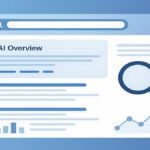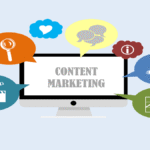The quality of your reports is very important for building trust with your consumers and keeping them at your agency for a long time. Reports are a clear indication of how well your agency is doing, and customers typically use them as the main method to judge the value you provide. Reports need to be accurate, complete, and interesting to make a difference. The client reporting tools should provide outcomes in a manner that is both clear and helpful.
It might take hours of valuable time to write such extensive reports by hand. Client reporting tools may make this process easier, which saves time and makes things clearer and more consistent. It’s crucial to remember, however, that not all tools have the same functionality or quality. Picking the correct reporting software is very important for giving clients great experiences and earning their confidence.
Best Client Reporting Tools

1. Whatagraph
Whatagraph is among the sophisticated and easy-to-use client reporting tools that make it easy to collect, analyze, and show your marketing data. It offers an all-in-one platform where you can quickly integrate numerous data sources, view critical KPIs, and convert raw data into valuable insights.
One of the major advantages is its straightforward design, which makes it accessible and easy to use for everyone on your team, from data analysts to account managers. You don’t need to know a lot about technology or have a lot of experience. As soon as you join in, you can start producing professional, visually attractive reports in just a few clicks. With Whatagraph, reporting becomes quicker, more efficient, and far less stressful for your whole team.
Features:
- KPI Monitoring.
- ROI Tracking.
- Customizable Reports.
- Functions/Calculations.
- Third-Party Integrations.
- Reporting & Statistics.
- Multiple Data Sources.
- Campaign Tracking.
- Client Management.
- Real-Time Data and many more.
Price: Contact Whatagraph.
2. Cyfe
This is one of the best client reporting tools that collects data and dashboards from all the analytics systems we use and puts them all in one place. It also interacts with Google Spreadsheets, so we can add statistics like backlinks and share counts for certain pieces of content.
Bottom line, it displays all the data on a dynamic dashboard and provides us a unique URL that we can deliver to the customer. This reduces by half the time we spend reporting. Users utilize it to measure performance data across hundreds of platforms. Their customers especially like not having to log in to each platform’s statistics—they can view whatever they want on dashboards that we design for each account.
Features:
- Alerts/Notifications.
- Social Media Integration.
- Campaign Tracking.
- ROI Tracking.
- Activity Dashboard.
- Multiple User Accounts.
- Private Dashboards.
- Public Dashboards.
- Publishing/Sharing.
- Real-Time Analytics and many more.
Price:
- Starter: $10/user/month.
- Standard: $29/user/month.
- Pro: $49/user/month.
- Premier: $89/user/month.
3. Looker Studio
One of the most well-liked automatic client reporting tools is Looker Studio, formerly Google Data Studio. Additionally, it looks great on paper. It is free, lets you gather information from hundreds of sources, and generates useful reports.
Its superior data integration with Google’s marketing platform is its main selling point. It will be quite simple to link data and generate reports if your agency uses YouTube, Google Ads, Google Analytics, or Google Search Console extensively. After that, you may share and modify the reports with your customers.
When you attempt to import data sources from outside Google’s ecosystem, like LinkedIn or HubSpot, things don’t work as well. You must buy third-party connectors to link this data, which have repeatedly shown themselves to be less dependable than Google’s native ones, resulting in unstable and sluggish performance.
Features:
- Self-Service Data Preparation.
- Data Transformation.
- Data Management.
- Data Extraction.
- Single Page View.
- Conversion Tracking.
- Collaboration Tools.
- Streaming Analytics.
- High Volume Processing.
- Integration into Third Party and many more.
Price: Contact Google.
4. Microsoft Power BI
An interactive data visualization tool called Microsoft Power BI was created to assist companies in gathering, organizing, and analyzing data. With data from a broad range of marketing channels, you can utilize it to build several visually appealing and data-rich dashboards and reports.
Marketers may organize client data from disparate sources and make it comprehensible for end users with the aid of this extensive automated reporting solution. Power BI prioritizes self-service, much like other client reporting systems. This implies that end users and decision-makers are encouraged to access and modify data without constantly contacting data analysts.
Features:
- Ad hoc Analysis.
- Mobile Access.
- Data Transformation.
- Data Synchronization.
- Customizable Reports.
- Interactive Reports.
- Reporting & Statistics.
- Dashboard.
- Visual Analytics.
- KPI Monitoring and many more.
Price:
- Free plan available.
- Pro: $10/user/month.
- Premium: $20/user/month.
5. AgencyAnalytics
A client reporting solution called AgencyAnalytics was created especially for marketing firms that want to automate their reporting procedure. With the solution, you may link your customers’ marketing or analytics platforms and generate personalized reports that support their decision-making.
The SEO auditing tools included with AgencyAnalytics may automatically check the websites of your clients and send out notifications if there are any problems. Because of the tool’s intuitive layout, users may easily build bespoke reports for a variety of circumstances. Additionally, you may alter charts and colors to enhance branding and communication.
Features:
- Engagement Tracking.
- ROI Tracking.
- Reporting & Statistics.
- Data Import/Export.
- Social Media Integration.
- Keyword Rank Tracking.
- Keyword Tracking.
- Customizable Reports.
- Conversion Tracking.
- Client Management and many more.
Price:
- Freelancer: $79/month.
- Agency: $239/month.
- Pro: $479/month.
6. Google Analytics
It would be simple to overlook Google Analytics in such a list. We are mostly examining enterprise-level tools and largely disregarding free resources. That would be an error in this situation. It’s the best online traffic analysis tool, it’s free, and it continues getting better. It’s simple to use, and almost everyone has it, but many businesses don’t have it configured correctly.
Although it doesn’t have the same sleek appearance as some of the other tools available, it is difficult to beat. If you’ve lost interest in GA, consider downloading it on your phone and exploring the assistant feature. Life keeps improving.
Features:
- Augmented Analytics.
- Pageview Tracking.
- Intelligent Search.
- Customizable Reports.
- Usage Tracking/Analytics.
- Reporting & Statistics.
- Website Analytics.
- Data Aggregation.
- Real-Time Data.
- Campaign Tracking and many more.
Price: Free.
Read More: 9 White Label Marketing Software for Agencies
7. Tableau
Agencies may manage data, automate reporting, and provide their customers with relevant insights by using Tableau, a business intelligence tool and one of the top client reporting tools. With the help of tools like trend lines, forecasting, and clustering, you can carry out intricate data analysis, find patterns, and spot areas for improvement.
With its visual query builder and drag-and-drop interface, Tableau remains (relatively) user-friendly even with these sophisticated capabilities. You can easily produce insights and use reports to communicate them to stakeholders.
Features:
- Customizable Reports.
- Customizable Fields.
- Data Storage Management.
- Demand Forecasting.
- Element Analytics.
- Embeddable Maps.
- ETL (Extract, Transform, and Load).
- Geographic Maps.
- Heatmaps.
- Data Migration and many more.
Price:
- Viewer: $15/user/month.
- Explorer: $42/user/month.
- Creator: $75/user/month.
8. NinjaCat
Digital marketing organizations may use NinjaCat as a reporting tool to track campaigns and provide client reports that show the ROI of their marketing expenditures. NinjaCat may be used to link, clean, and convert marketing data before moving it to any of the destinations that are accessible, such as Microsoft Azure, Amazon S3, and Google Cloud Platform.
For reporting, NinjaCat offers a good native visualization layer. Client reports may be automatically generated using pre-made templates for various reporting scenarios. However, since the data cloud and visualization layer are two different contexts, you have to refresh the visualization layer for any changes you make to the data to take effect.
NinjaCat requires that you generate templates, dashboard profiles, and reports independently, combine them, and assign them to customers rather than having a single location to create, amend, and distribute reports.
Features:
- API.
- Benchmarking.
- Customizable Reports.
- Third-Party Integrations.
- Strategic Planning.
- Call Recording.
- Keyword Tracking.
- CRM.
- Scheduled/Automated Reports.
- Reporting/Analytics, and many more.
Price: Contact sales.
9. TapClicks
TapClicks is a comprehensive software package that offers competent client reporting and analytics while centralizing data from many sources. You can automatically create client reports for a variety of marketing channels, such as organic and paid search, social media, display, and even television advertising, using TapClicks, an all-in-one platform for marketing operations.
Separately, you won’t be happy to learn that TapClicks doesn’t let you update many reports at once if your present client reporting solution offers numerous time-saving capabilities.
Features:
- Lead Management.
- Functions/Calculations.
- Visual Analytics.
- Trend/Problem Indicators.
- Data Discovery.
- Customizable Dashboard.
- Strategic Planning.
- ROI Tracking.
- Drag & Drop.
- Performance Metrics and many more.
Price:
- Basic: $599/month.
- Pro: $999/user/month.
Which Will You Choose, Then?
Your requirements and objectives will ultimately decide which reporting tool is the greatest match for your organization. If you’re currently utilizing a range of specialized platforms for various marketing functions—such as SEO, social media, email marketing, and PPC—you could benefit most from an “all-in-one” reporting solution.
These solutions aggregate all your data sources into one single dashboard, making it easy to measure performance, discover patterns, and produce detailed reports without jumping between numerous applications.
However, if your concentration is more niche—such as public relations, social media analytics, or search engine optimization—you may pick a program that focuses on those specific areas. In such a scenario, pick from these client reporting tools depending on which ones would give the most value to your customers and best meet their demands.
Still uncertain about which tool to go with? Many of these platforms provide free trials or sample versions, allowing you the option to explore their features without committing to them right away. This enables you to test usability, analyze reporting quality, and determine whether it genuinely matches your workflow and customer requirements.
Above all, your objective should be to expedite your reporting process—saving critical time—while also maintaining honest and effective communication with your customers. The appropriate solution will help you achieve both objectives, allowing you to produce clear and professional reports that build confidence and demonstrate your agency’s value, all without the usual time-consuming burden of manual reporting.
FAQ
Q: A client reporting system: what is it?
A: Giving customers frequent updates on their investments or initiatives is known as client reporting. The reports often include data on project progress, investment performance, and any other pertinent information the customer may want.
Q: What qualities do customers want in agencies?
A: In general, clients want more than a fleeting connection. Customers are looking for an organization with which they can work, trust, and build a future.
Q: What experience does it have with client reporting?
A: Presenting a marketing agency’s campaign outcomes to clients while emphasizing the efficacy and worth of the agency’s services is known as client reporting. It entails the use of white label solutions and automated systems to communicate campaign progress and results in an effective and transparent manner.







